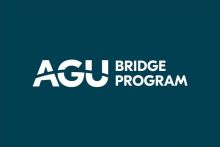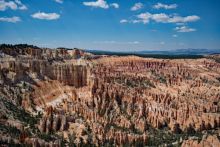Geoscience Currents transmit snapshots of the many facets of the geoscience profession, in-depth case studies of how geoscience is applied, factsheets that provide rigorous introductions to a range of geoscience topics, workforce trends, and career paths.
Partner with us to help support well-informed public policy and decision making with expert, impartial geoscience information. Visit our Sponsorships page for more information or email sponsorships@americangeosciences.org.
Displaying 181 - 190 of a total of 350 items

April 19, 2018
Geologic Maps and Landslide Hazards
A geologic map is key to understanding landslide risk. The U.S. Geological Survey (USGS) and numerous state geological surveys around the nation prioritize the mapping of landslide-prone areas. Understanding landslide risk is crucial in making decisions around...

April 16, 2018
Prerequisite requirements for 67 US-based field camps were identified from syllabus and camp websites and categorized into one of ten overarching course topics. Additionally, the field camps themselves were classified as either a traditional camp (4 to 6 week summer field experience) or a non-...

April 09, 2018
Overview
The 800-mile-long Trans-Alaska Pipeline, which starts at Prudhoe Bay on Alaska’s North Slope, can carry 2 million barrels of oil per day south to the port of Valdez for export, equal to roughly 10% of the daily consumption in the United States in 20171. The pipeline crosses the Denali...

April 04, 2018
Using Geologic Maps to Protect Public Health
Geologic maps can be used to understand and mitigate public health risks across the US, in addition to their more traditional use in resource and infrastructure decisions. Geologic maps can show the location of naturally occurring hazardous materials...

March 30, 2018
Geologic Mapping
In 1992, Congress established the National Cooperative Geologic Mapping Program (NCGMP) in the U.S. Geological Survey to address the nationwide need for detailed geologic mapping. The NCGMP coordinates Federal, State, and academic programs to leverage all their mapping...

March 14, 2018
We present follow-up results from a 2016 workshop on sexual harassment and assault in the sciences, convened by the American Geophysical Union (AGU) and funded by the National Science Foundation (NSF). The workshop included over 60 leaders from government agencies, academia and professional...
February 26, 2018
Earthquakes in the New Madrid Fault Zone
The New Madrid fault zone (NMFZ) is a long-established weakness in the Earth’s crust in the central and eastern US where earthquakes have occurred for hundreds of millions of years. In 1811-1812, three large earthquakes (up to magnitude 7.5) caused severe...

December 28, 2017
The participation rate of women in geoscience degree programs saw marked changes in 2016. There was a spate of doctoral degrees awarded to women in 2016, which has also been reflected in a decline in the participation rate of graduate enrollment of women. We observe that often December graduates...
December 07, 2017
What grows in arid, sandy soils? How do these soils become dust?
Many small organisms, such as bacteria and fungi, grow among the sand and silt particles in dry valley and desert soils. At the soil’s surface, these organisms often form biological webs (“microbiotic crusts”) that keep small sand...

November 30, 2017
Internships in policy, media and publishing, and education/workforce/talent pool areas at the American Geophysical Union (AGU) and American Geosciences Institute (AGI) exist to provide professional work experiences for students. These internships are offered for a period of three months and...
Pages
Upcoming Webinars


